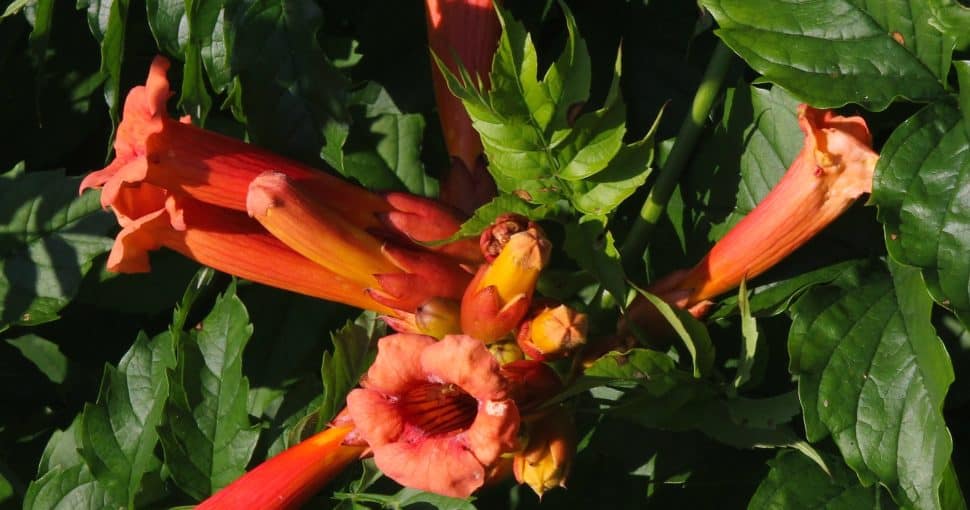Interested in learning about the poisonous plants in Tennessee to protect yourself when hiking the great outdoors in the state? Even though Tennessee is a gorgeous state well-known for its hiking trails, it is also home to abundant poisonous plants that can cause a vast array of symptoms. Read on to discover these plants to avoid touching or ingesting them!
Contents
- 1. Poison Hemlock (Conium maculatum)
- 2. Poison Ivy (Toxicodendron radicans)
- 3. Stinging Nettle (Urtica dioica)
- 4. Poison Sumac (Toxicodendron vernix)
- 5. Poison Oak (Toxicodendron diversilobum)
- 6. Umbellifers (Apiaceae)
- 7. Great Millet (Sorghum bicolor)
- 8. Riverhemps (Sesbania)
- 9. Japanese Yew (Taxus cuspidata)
- 10. Sneezeweed (Helenium)
- 11. Easter Lily (Lilium longiflorum)
- 12. Hairy Vetch (Vicia villosa)
- 13. Carolina Sweetshrub (Liriodendron tulipifera)
- 14. Oleander (Nerium oleander)
- 15. Yellow Jessamine (Gelsemium sempervirens)
- 16. Locoweed (Oxytropis)
- 17. Lady’s Glove/Purple Foxglove (Digitalis purpurea)
- 18. Lantana (Lantana camara)
- 19. Groundsel (Senecio vulgaris)
- 20. False Hellebores (Veratrum)
- 21. Virginia Creeper (Parthenocissus quinquefolia)
- 22. Buckthorn (Rhamnus cathartica)
- 23. Trumpet Vine (Campsis radicans)
- 24. Jimsonweed/Devil’s Weed (Datura stramonium)
Tennessee is well-known for its marvelous natural vistas, from the plains in the west to the Cumberland Plateau and the ever-wonderful Great Smoky Mountains. The state gives its residents and tourists several wonderful trails to hike. However, if there’s one thing that can ruin a hiking or camping trip in Tennessee, it’s the state’s abundant poisonous plants.
As you explore the incredible landscape of Tennessee, you need to be on the lookout for the toxic plants that can cause various painful symptoms. Learning about these vines, shrubs, and trees will keep you from brushing against their leaves on ingesting their fruits and seeds. Some common culprits you should watch out for include Poison Oak, Poison Hemlock, Poison Ivy, and Great Millet. Most of the poisonous plants in the state will cause you to develop dermatitis and multiple internal health issues.
So, without ado, let’s look at 24 poisonous plants in Tennessee that you must avoid touching and ingesting:
1. Poison Hemlock (Conium maculatum)
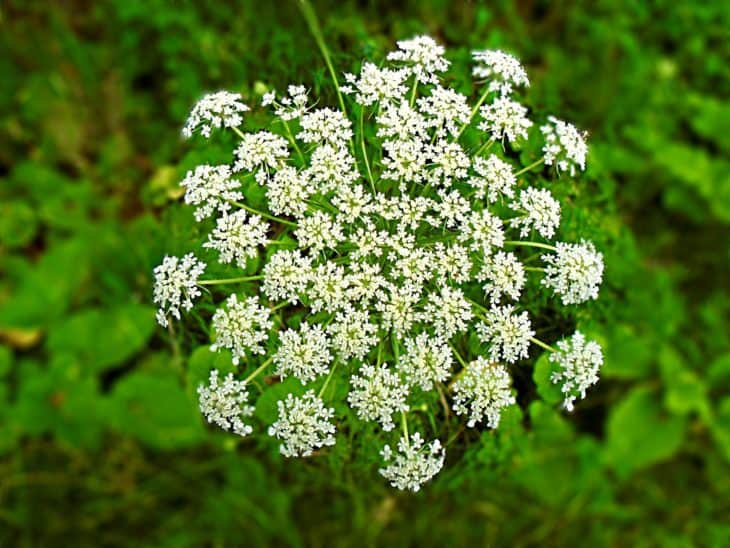
Poison Hemlock is a toxic plant that contains poisonous alkaloids and a toxin known as coniine. This aggressively-growing plant should not be touched directly or ingested because it can cause dizziness, pupil dilation, paralysis, and death. Poison Hemlock is a widespread, toxic biennial that grows along roadsides, streams, and rivers. It also grows abundantly in vacant lots and open, sunny regions. Poison Hemlock is an herbaceous weed with stems that feature purple-red streaks and spots. It bears tiny white blossoms that develop in umbrella-shaped clusters. It also features teethed, fern-like, bright green leaves that have a musty smell.
2. Poison Ivy (Toxicodendron radicans)
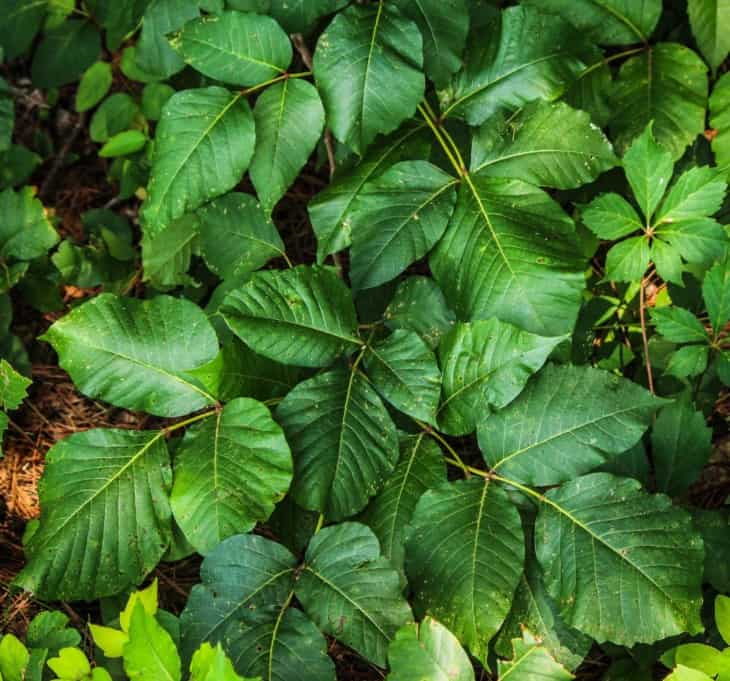
Poison Ivy is a highly poisonous plant as it contains urushiol, an oleoresin that can cause severely itchy skin, painful inflammation, and oozing skin blisters, resulting in a condition called dermatitis. This plant is an eastern North American native found throughout America. Depending on how it’s grown, Poison Ivy can develop into a low weed shrub or a climbing vine. It features variable growth, green or yellow blossoms, greenish drupes, and lobed, hairy leaves with serrated ends. The foliage of Poison Ivy develops striking hues of orange, red, and yellow in fall.
3. Stinging Nettle (Urtica dioica)
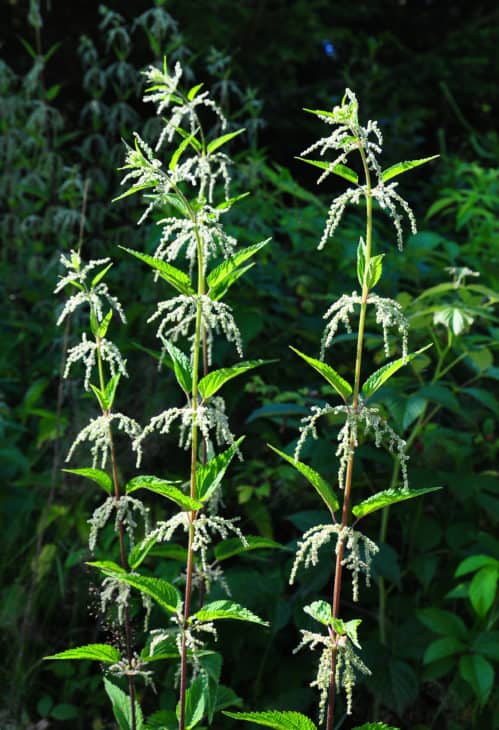
Native to Europe and found throughout temperate North America, Stinging Nettle is a dioecious, herbaceous, weedy perennial that thrives in nitrogen-rich soils. It features upright, rigid stems and dark green, finely serrated, heart-shaped, opposite leaves that taper at the end. The leaves of a Stinging Nettle contain bristles or hairs that release a stinging chemical that can pierce the skin and cause itchiness and burns. This plant also grows small, white, or green blossoms that develop in abundant, whorled clusters.
4. Poison Sumac (Toxicodendron vernix)
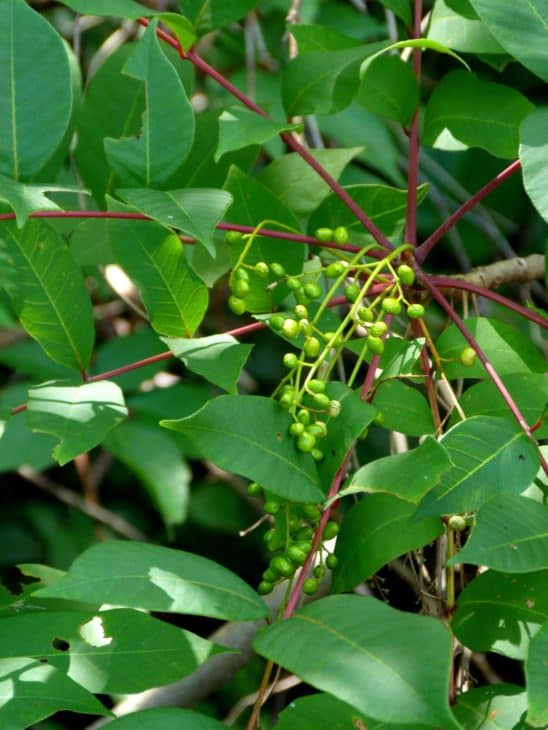
Native to North America, Poison Sumac can grow as a tall, straight tree or a woody shrub. It typically thrives in swamps and hardwood forests. This plant also grows alongside ponds, streams, and rivers. Also known as Swamp Sumac, Poison Sumac can be identified by its reddish stems and elongated, velvety, v-shaped leaves with smooth edges. It grows tiny, green-yellow blossoms and spherical, creamy white to gray fruits. Poison Sumac contains urushiol, a highly allergenic oily substance. Contact with this substance can cause your skin to develop blisters, itchiness, swelling, irritation, and a rash.
5. Poison Oak (Toxicodendron diversilobum)
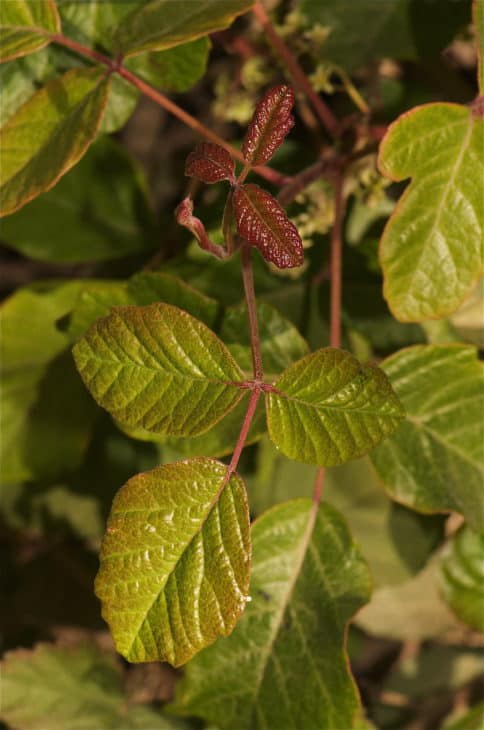
Poison Oak is a low-growing, upright shrub or vine that is native to the United States. It features bright green, scalloped, toothed, lobed, oak leaf-shaped leaves that turn red ad brownish-orange in fall. This plant grows as a dense shrub in abundant sunlight and a climbing vine in shaded areas. It contains a potent allergen known as urushiol. If you touch its bruised, broken, or damaged leaves, the sap will cause your skin to develop inflammation, swelling, blisters, and itchiness.
Related: 7 Plants That Look Like Poison Oak
6. Umbellifers (Apiaceae)
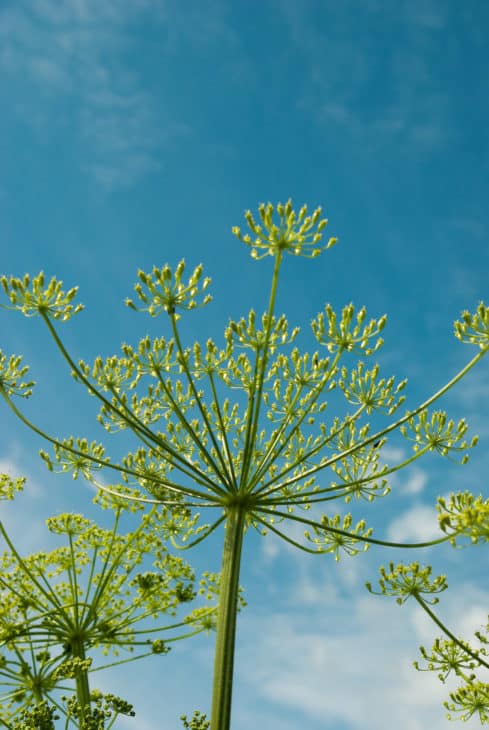
Umbellifers are aromatic plants that produce recognizable and attractive umbrella-shaped blossoms known as umbels. The plant can grow clusters of simple or compound blooms that can be nearly spherical or flat-topped. Umbellifers also gave hollow, ribbed stems, two-sided, flat seeds, and long, sheathed petioles that lead to divided leaves. Some Umbellifers are nontoxic, but there are phototoxic varieties that can cause severe sunburn, stinging, reddening, and blisters.
7. Great Millet (Sorghum bicolor)
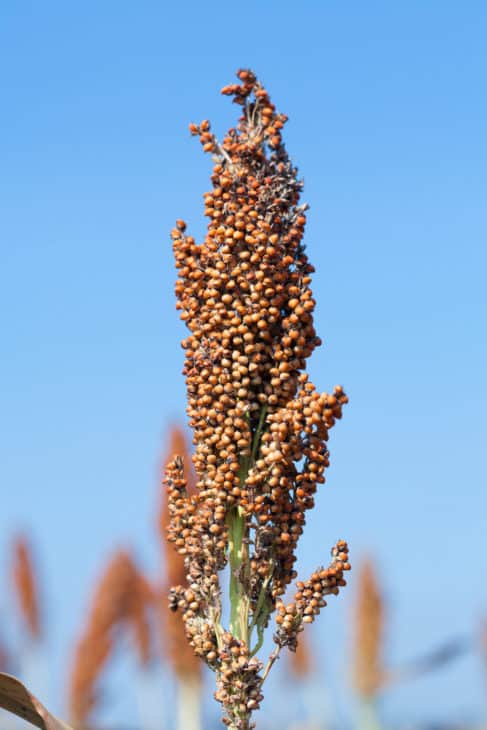
Also known as Guinea Corn and Broomcorn, Great Millet is an annual plant native to Africa. It is a crop grass that has naturalized throughout the world and has some perennial varieties as well. The wild species of Great Millet feature spreading whorled branches and rings of long hairs. This plat produces prussic acid that can cause respiratory distress and fatality. Consumption of a young sorghum bicolor is especially toxic for humans and wildlife.
8. Riverhemps (Sesbania)
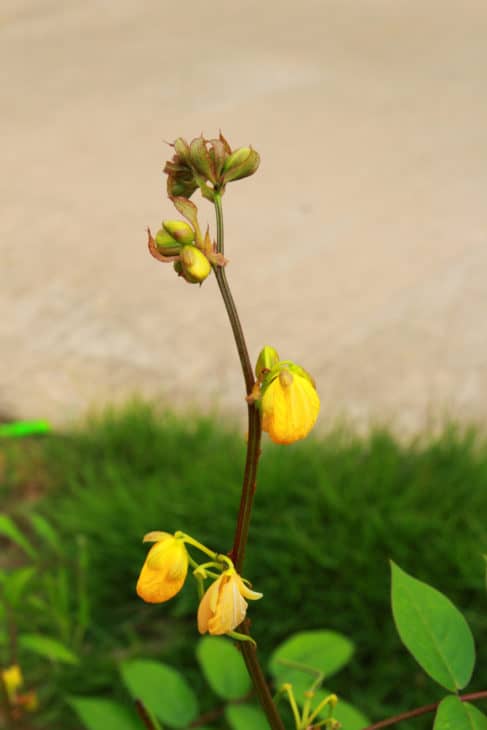
Riverhemps are a genus of blossoming plants in the pea family and the only genus found in the tribe Sesbanieae. Some of the most notable species of Sesbania include Rattlebox, Spiny Sesbania, and Sesbania Sesban. Some of these plants are aquatic, and some are toxic. Most of them are used in alley cropping to boost the soil’s nitrogen content. These plants are potentially toxic, but are also palatable to cattle.
9. Japanese Yew (Taxus cuspidata)
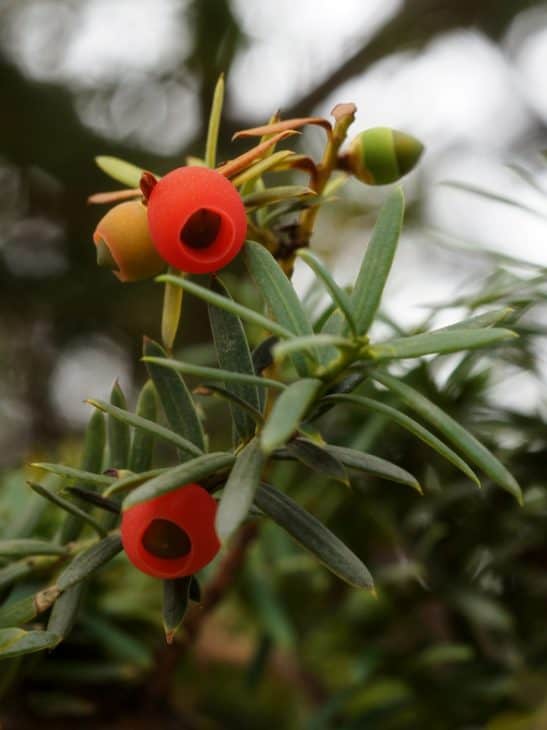
Native to Japan, as the name suggests, Japanese Yew is an ornamental, evergreen shrub that is widely cultivated in the Northern Hemisphere. Also known as Spreading Yew, Japanese Yew is a hardy, fast-growing plant that grows leaves with two distinct yellowish bands on their undersides. All parts of this plant are toxic. It contains toxins known as taxine A and B, which can potentially be fatal when ingested. They can cause difficulty breathing, seizures, tremors, and vomiting.
10. Sneezeweed (Helenium)
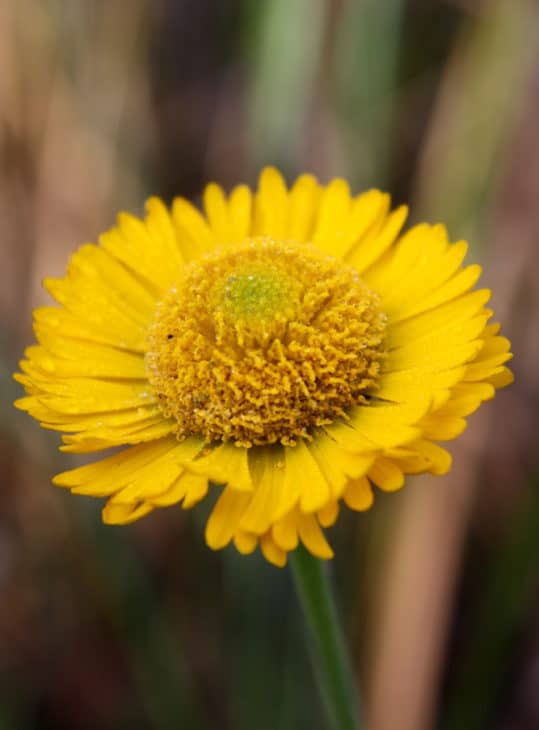
Native to North and Central America, Sneezeweed is a perennial that grows daisy-like blossoms with showy petals in multiple hues, including several shades of yellow and red. The petals surround a brown cone with golden pollen. These deer-resistant plants are well-suited for prairies, cottage gardens, and naturalistic areas. However, their seeds, flowers, and leaves are poisonous to humans. When consumed in significant quantities, they can cause intestinal and gastric irritation, which can lead to death.
11. Easter Lily (Lilium longiflorum)
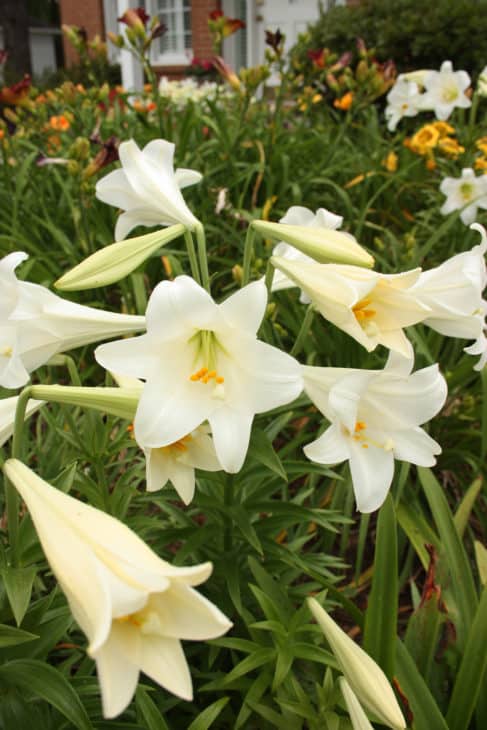
Easter Lily is a stem-rooting Lily that features a single sturdy stem growing from its bulb. It produces narrow, large, lance-like leaves and two or more terminal blossoms. Vigorous Eastern Lilies might feature 12 to 15 fragrant blooms. Each flower is white, tubular, and 3-7 inches long with overlapping petals that create a trumpet shape. All parts of this plant, including the stems, leaves, petals, and pollen, are poisonous. Ingesting it can cause you to experience swelling of the throat and mouth, difficulty breathing, vomiting, burning pain, and severe stomach ache.
12. Hairy Vetch (Vicia villosa)
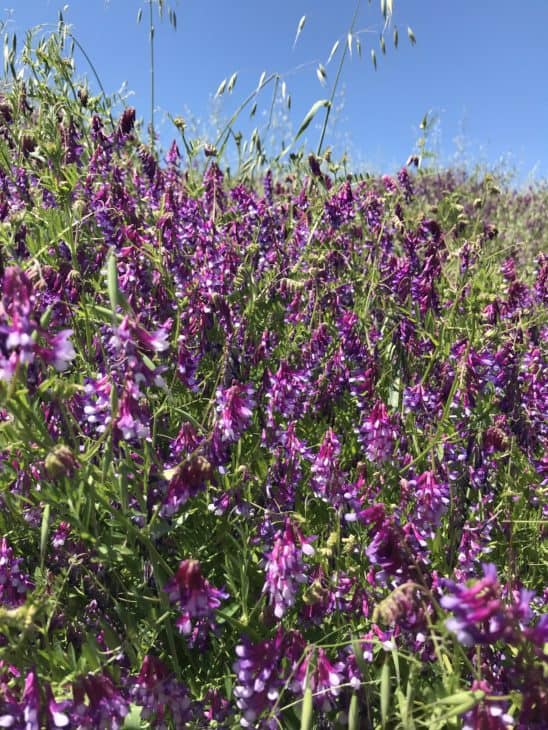
Hairy Vetch is a type of legume and a cold-hardy plant that covers crops grown through the winter. It has a vine-like growth habitat and features 9 to 17 pairs of leaflets that form hairy leaves ending in tendrils. This plant bears several blue-violet blossoms borne on one side of its hairy stems. It also develops small, round, irregularly-sized black seeds. Even though poisoning by this plant is not that common, accidental ingesting can happen, resulting in inflammation within the skin, kidneys, etc.
13. Carolina Sweetshrub (Liriodendron tulipifera)
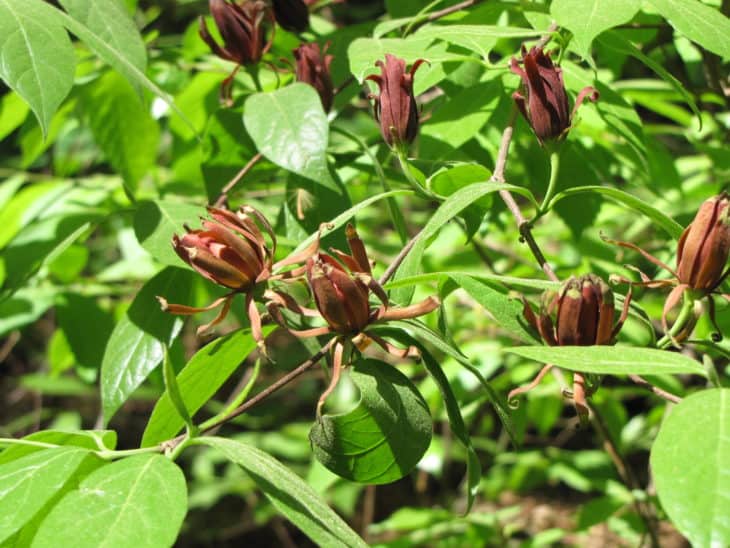
Carolina Sweetshrub is an eastern hardwood tree with a straight trunk and narrow crown. It features deciduous, star-shaped foliage with waxy, smooth leaves that turn bright gold in fall. This plant grows tulip-like, showy, yellow-orange blossoms and cone-shaped seedheads that remain even after the leaves fall. This plant is also poisonous, and its seeds and berries should not be ingested.
14. Oleander (Nerium oleander)
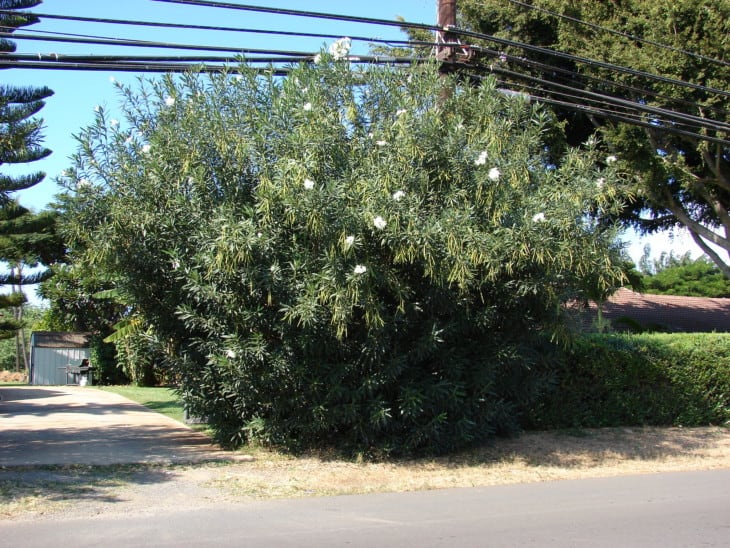
Oleander is an evergreen, ornamental, flowering shrub that is native to the Mediterranean. It is characterized by its tall, shrub-like foliage that features thick, lanceolate leaves. This plant grows clusters of yellow, rosy, and white blossoms. It contains a poisonous milky sap that produces toxic cardiac glycosides. Accidental ingestion can cause fatality as the toxin affects the heart and slows down the heart rate.
15. Yellow Jessamine (Gelsemium sempervirens)
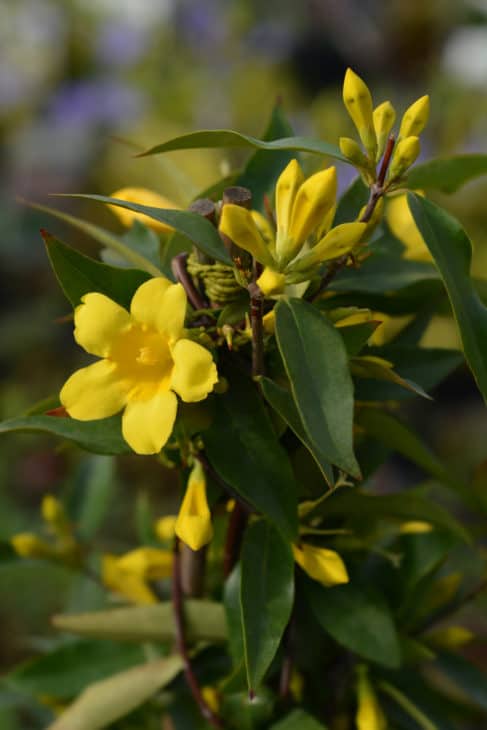
Also known as Carolina jessamine, Yellow Jessamine is an evergreen to semi-evergreen plant that develops striking, bright yellow, scented blossoms that grow in early spring or late winter. This fast-growing vine climbs exceptionally well on trellises, walls, and fences without taking the space of the surrounding shrubs or trees. Direct contact with the vine can cause skin irritation, and accidental ingestion of any part may cause poisoning. It contains gelsemium, which can cause seizures, difficulty in breathing, muscle weakness, and paralysis.
16. Locoweed (Oxytropis)
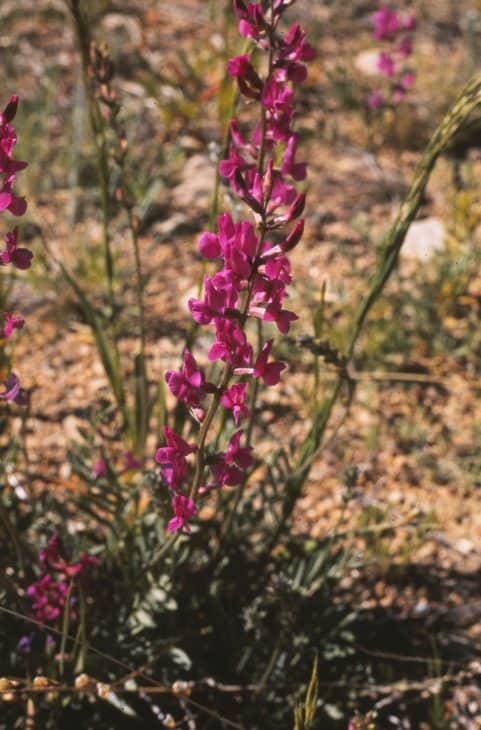
Also known as Loco or Crazyweed, this plant is common in North America. It produces selenium, phytotoxins, swainsonine, and other toxins that are harmful to livestock and can cause locoism. The symptoms of Locoweed poisoning include aggression, salivation, seizures, hyperactivity, weakness, fatality, and more. Locoweed features ovate to obovate, leathery leave, and dirty-white, purple-tinged blossoms that bloom in spring.
17. Lady’s Glove/Purple Foxglove (Digitalis purpurea)
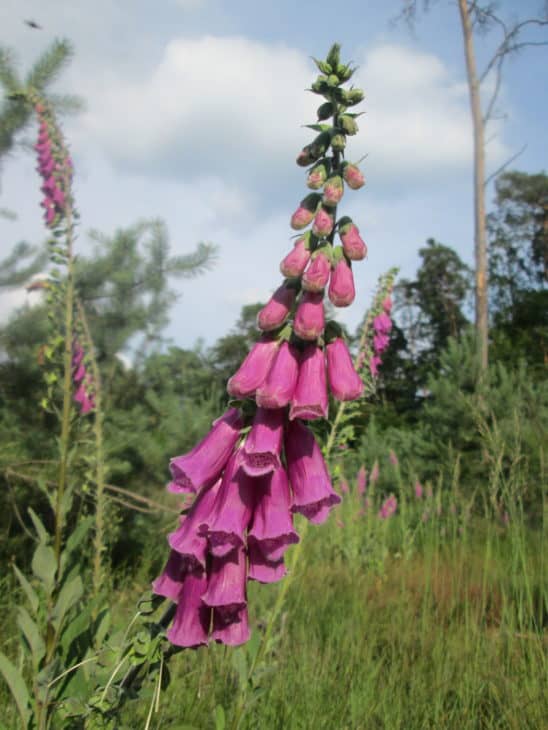
A European native, Lady’s Glove or Purple Foxglove is a perennial herb with terminal racemes of large pendulous white blossoms with purple edges and a basal rosette of downy leaves. This erect perennial herb prefers to grow in moist, well-drained soils that are high in organic matter. It blooms in late spring to early summer and requires copious watering in dry weather. Lady’s Glove contains digitalis and other cardiac glycosides that can affect the heart.
18. Lantana (Lantana camara)
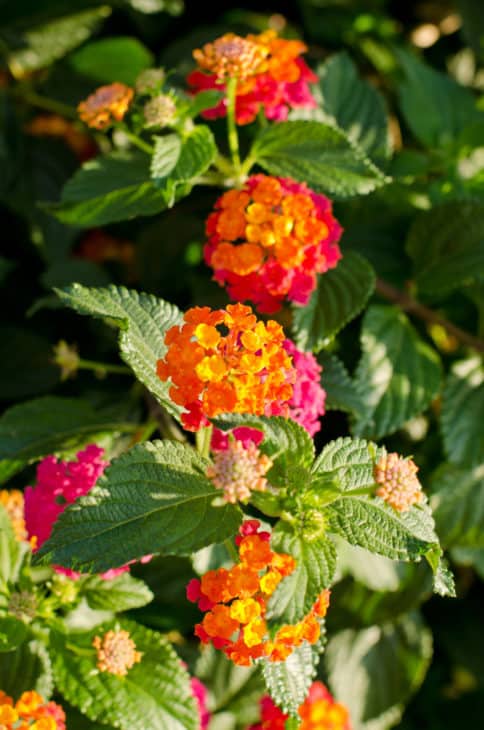
Lantana is a weed that grows in tropical America. It produces clusters of poisonous berries and pink, orange, yellow, and white blossoms that grow in multiple combinations. This weed also features scented, simple, rough, oval-shaped leaves that can cause skin irritation. However, the dark blue to blackish berries are the most toxic and cause fatalities in livestock. Lantana has triterpene acids lantadene A and B, which affect the liver and gallbladder.
19. Groundsel (Senecio vulgaris)
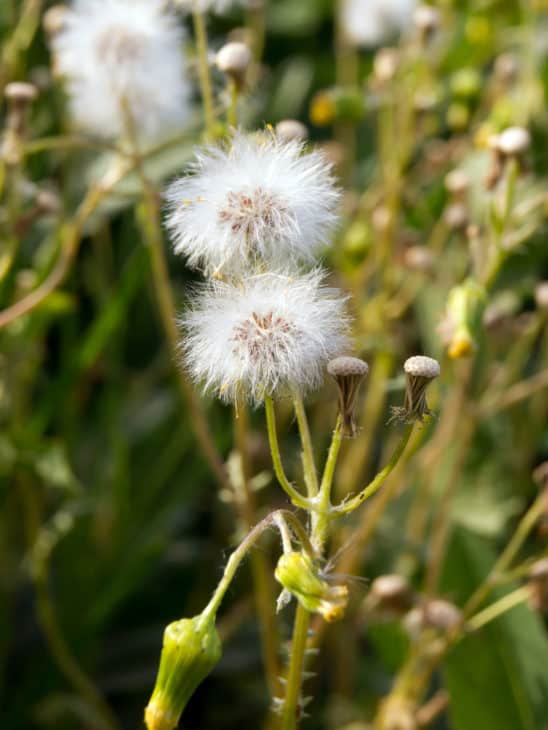
Also known as Common Butterweed and Grundy Swallow, Groundsel is an annual winter weed native to Europe, temperate Asia, and North Africa. It features distinctively lobed leaves and yellow blossoms that mature to produce seeds. This plant is commonly found in moist conditions in ornamental gardens and in disturbed locations, such as cracks in pavements, roadsides, and waste sites. It contains toxic compounds known as pyrrolizidine alkaloids that can cause irreversible liver damage and fatality.
20. False Hellebores (Veratrum)
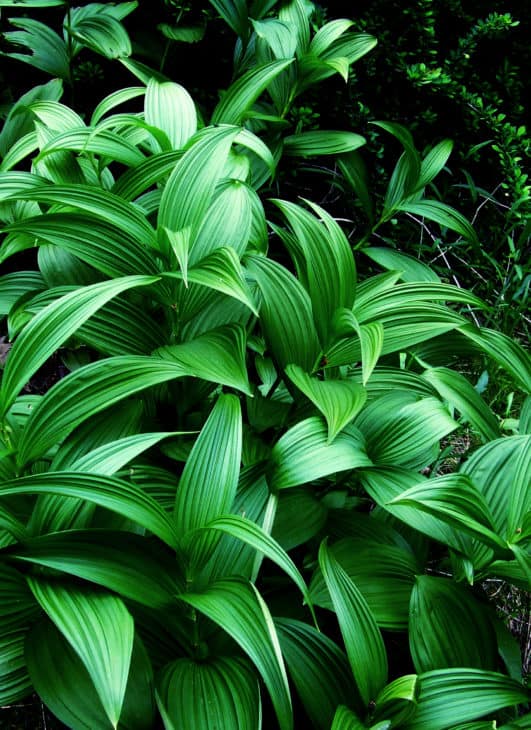
Also known as Cow Cabbage, False Hellebore is a poisonous perennial that causes livestock poisoning. It features single-branched stalks that grow clusters of cream-hued blossoms at their top. This plant has long leaves and black seed pods. Every part of this plant is poisonous, but the roots are about 10 times more poisonous than its stems and leaves. False Hellebore contains steroidal alkaloids that cause vomiting, convulsions, coma, shallow breathing, frothing at the mouth, and irregular gait.
21. Virginia Creeper (Parthenocissus quinquefolia)
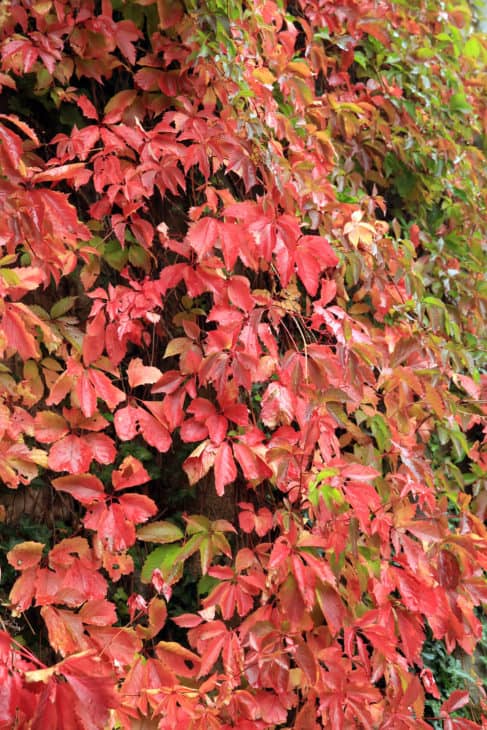
Native to eastern and central North America, Virginia Creepers are deciduous, woody, high-climbing vines. They feature compound-palmate, coarsely toothed, dull green leaves that develop mauve, purple, and red hues in fall. Also known as American Ivy, this plant grows clusters of tiny, greenish-white blossoms that give way to round, fleshy, bluish-black berries. Its leaves, roots, and stems contain raphides, which can cause skin irritation. The berries are also harmful as they contain oxalic acid, which is toxic when ingested.
22. Buckthorn (Rhamnus cathartica)
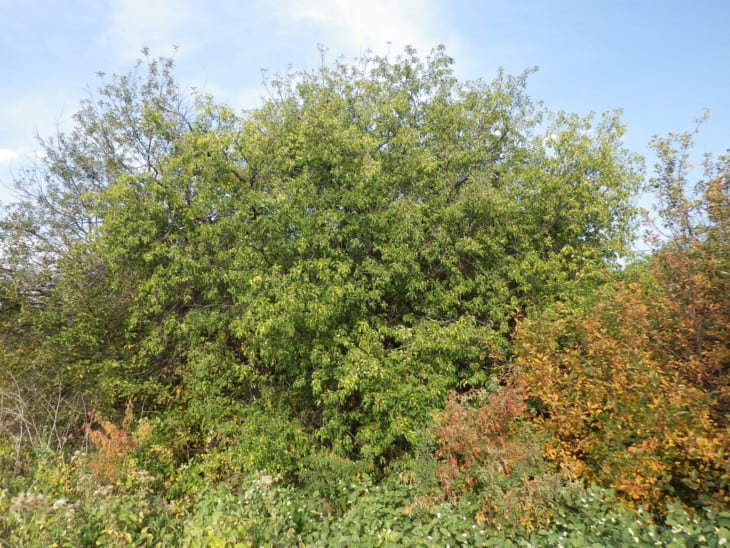
Native to Europe, Buckthorn is a deciduous, dioecious, hardy small tree or shrub with a dark gray bark with an orange underside. It features sub-opposite, oval-shaped, slightly serrate, dark green leaves and fragrant, greenish-yellow, 4-petaled spring blooms. Buckthorn also bears tiny, purple to black fall fruit. This plant can invade savannas, forests, and prairies and form dense thickets crowding understory plants. When ingested, its fruits and foliage can cause an upset stomach.
23. Trumpet Vine (Campsis radicans)
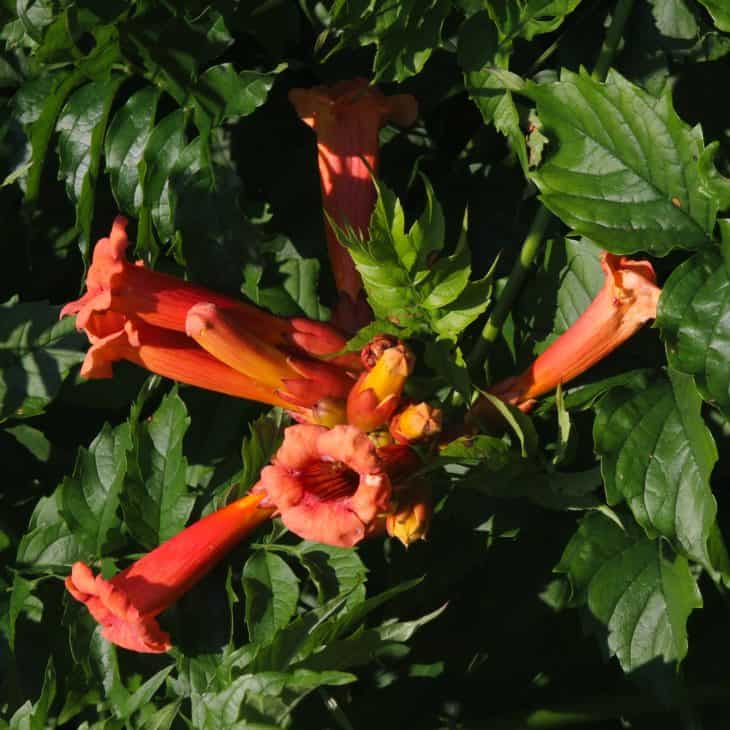
Trumpet Vine or Cow Itch is a hardy, deciduous, native climber in southern and eastern US. It grows terminal clusters of trumpet-shaped, tubular, showy, orange-scarlet, or orange blooms. This plant has shiny, dark green, pinnate leaves with glabrous, dull green undersides. It is thought to be a poisonous plant when ingested. Symptoms of Trumpet Vine poisoning include dilated pupils, gastric irritation, and numbness in the hands. Contact with its sap can also cause minor swelling and skin irritation that lasts for a few minutes.
24. Jimsonweed/Devil’s Weed (Datura stramonium)
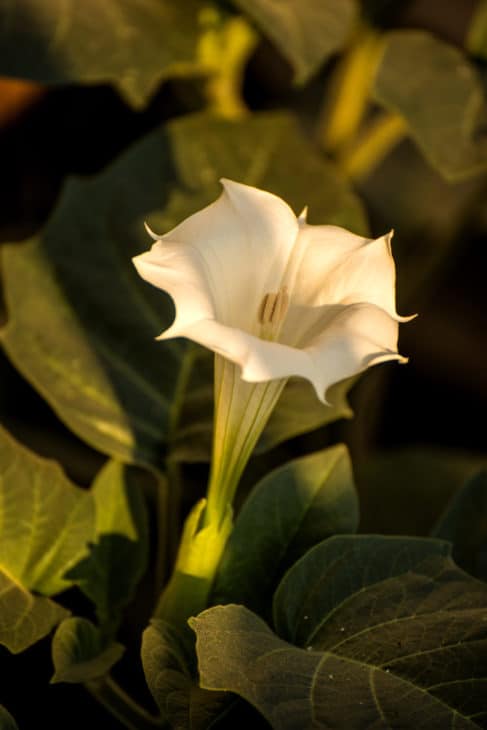
Devil’s Weed or Jimson Weed is an annual herbaceous Central American native plant. It is a hallucinogen and intoxicant, and all parts of this plant are poisonous when ingested. Commonly found growing in disturbed habitats and along roadsides, Jimson Weed has large, trumpet-shaped, violet or white blossoms and large, capsule-shaped, spiny fruits, known as thorn apples. It bears alternate, toothed, simple leaves and has green stems tinged with purple. Serious Jimson Weed poisoning and abuse can cause intoxication that lasts for days, dry skin, flushing, psychosis, impaired short-term memory, urinary retention, and more symptoms.

